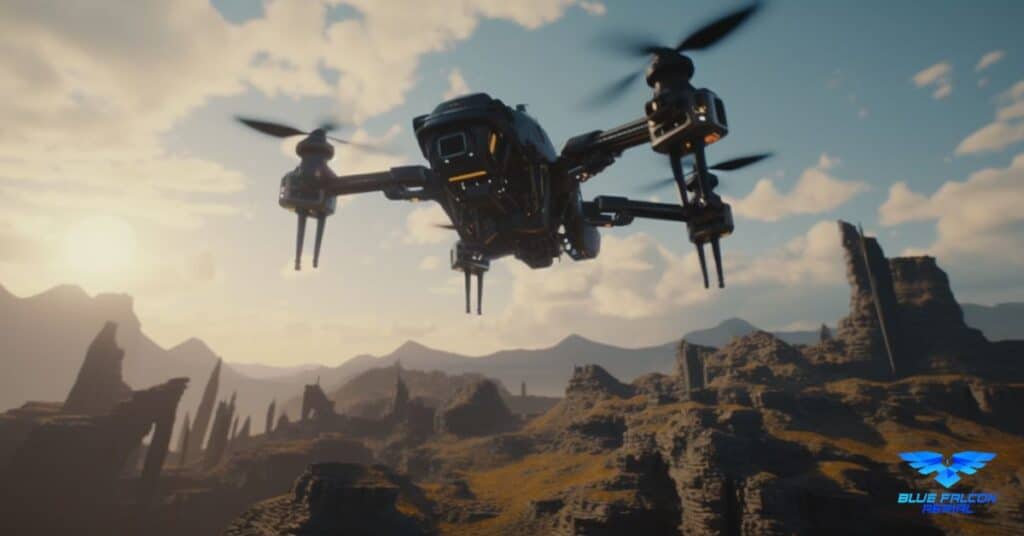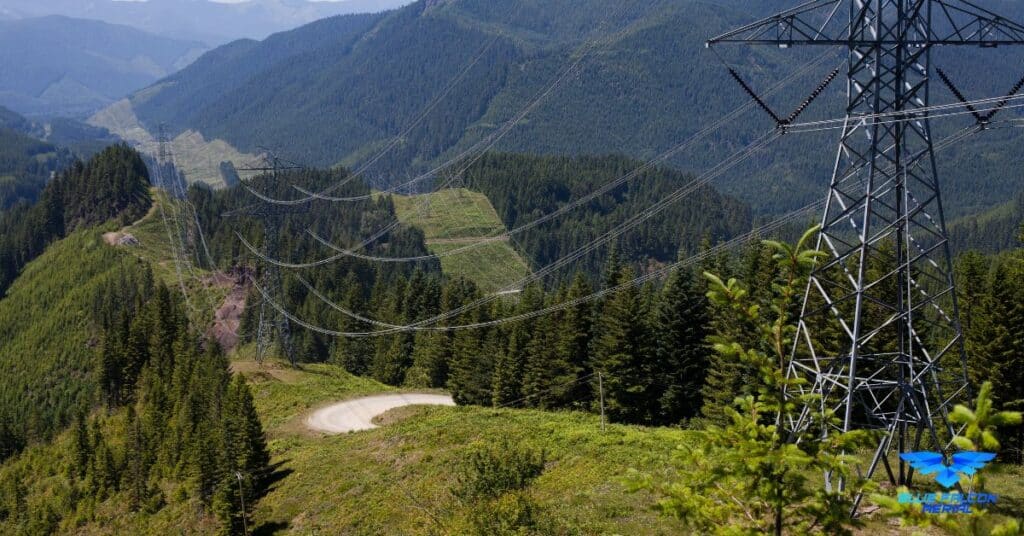Are you fascinated by drones and their ever-growing capabilities? One aspect that has a significant impact on a drone’s functionality is its payload capacity. By understanding the role of drone payload capacity in various applications, you can make informed decisions when selecting the perfect drone for your needs. In this article, we’ll dive into the factors that influence payload capacity and explore how it plays a crucial role in various industries, from aerial photography to emergency response. So, strap in and get ready to load up and take off!
Understanding Drone Payload Capacity
Definition
Drone payload capacity refers to the maximum weight a drone can carry, including cameras, sensors, and other equipment, without compromising its flight performance. Payload capacity is a crucial factor to consider when selecting a drone for a specific application, as it directly affects flight time, stability, and the overall efficiency of the drone.
Factors Affecting Payload Capacity
Several factors influence a drone’s payload capacity:
Drone Design: The overall design of a drone, including its size, weight, and materials, determines its payload capacity. Generally, larger drones with more powerful motors and robust frames can carry heavier payloads.
Battery Life: The size and weight of the battery play a significant role in determining payload capacity. A larger battery increases flight time but may also reduce the available payload capacity due to its added weight.
Motor Power: More powerful motors allow a drone to carry heavier payloads. However, powerful motors typically consume more energy, which can decrease flight time.
Propeller Size: Larger propellers can generate more lift, enabling the drone to carry heavier payloads. However, larger propellers may also require more energy and decrease flight time.
Flight Conditions: Environmental factors, such as wind, temperature, and altitude, can affect payload capacity. For example, flying at higher altitudes with thinner air may require more power to maintain lift, reducing the payload capacity.
Importance of Payload Capacity in Different Applications
Aerial Photography and Videography
In aerial photography and videography, payload capacity directly impacts the quality of the captured images and videos. Higher payload capacities allow drones to carry more advanced cameras, stabilizers, and additional equipment, such as filters and lighting systems. This capability enables professionals to capture stunning aerial imagery for various purposes, including real estate, cinematography, and marketing.
Mapping and Surveying
For mapping and surveying applications, drones with higher payload capacities can carry advanced sensors and mapping equipment, like LiDAR, multispectral cameras, or high-resolution cameras. These tools enable more accurate data collection for industries like construction, mining, and infrastructure planning.
Agriculture and Environmental Monitoring
In agriculture and environmental monitoring, drones with higher payload capacities can carry specialized sensors to monitor crop health, soil conditions, and environmental factors. Some examples of these sensors include hyperspectral cameras, thermal imaging sensors, and gas detectors. This information is crucial for making data-driven decisions in farming practices and environmental conservation efforts.
Delivery and Logistics
Drones with higher payload capacities can carry heavier packages, making them ideal for delivery and logistics applications. Companies like Amazon and UPS are already exploring drone deliveries, as they offer a faster, more efficient, and eco-friendly alternative to traditional ground-based transportation methods.
Emergency Response and Search and Rescue
Drones with higher payload capacities can carry specialized equipment for emergency response and search and rescue missions, such as thermal imaging cameras, loudspeakers, and even life-saving supplies. These drones can access hard-to-reach areas and provide real-time data, making them invaluable tools for disaster relief and rescue operations.
How to Optimize Drone Payload Capacity
Balancing Drone Design Elements
Optimizing drone payload capacity requires striking a balance between various design elements, such as drone size, weight, battery life, motor power, and propeller size. Engineers must consider these factors to create drones that can efficiently carry payloads while maintaining flight performance and stability.
Selecting the Right Drone Model for Specific Needs
Choosing the right drone for your needs is essential to ensure that it can handle the payload required for your application. Before making a decision, consider the following:
Purpose: Define the primary purpose of your drone and the type of payload it will carry, such as cameras, sensors, or packages.
Payload Weight: Determine the weight of the payload and ensure that the drone you select can handle it without compromising flight performance.
Flight Time: Ensure the drone has a flight time that meets your requirements, as the payload can significantly affect battery life.
Budget: Determine your budget and select a drone that offers the best payload capacity and performance within your price range.
Utilizing Drone Accessories
Drone accessories can help optimize payload capacity without compromising flight performance. Some examples of drone accessories include:
Payload Release Mechanisms: These devices allow drones to drop payloads, such as packages or emergency supplies, at precise locations.
Payload Expanders: Payload expanders can increase a drone’s payload capacity by redistributing the weight of the payload and improving the drone’s balance.
Gimbal Stabilizers: These devices help stabilize cameras and other sensors, ensuring smooth and stable footage even when carrying heavy payloads.
Examples of Drones with High Payload Capacities
Below are some examples of drones with high payload capacities that cater to various industries and applications:
DJI Matrice 300 RTK: This versatile drone is suitable for multiple industries and applications, such as inspection, mapping, and public safety. It has a maximum payload capacity of 2.7 kg (6 lbs) and can carry multiple payloads simultaneously.
Freefly Systems Alta X: Designed for aerial cinematography, the Alta X has a maximum payload capacity of 15.9 kg (35 lbs), making it ideal for carrying heavy cameras and other equipment.
Agras T16: This agricultural drone from DJI has a payload capacity of 16 kg (35 lbs) and is designed to carry liquid payloads for crop spraying and fertilization.
WingtraOne PPK: This fixed-wing drone is ideal for mapping and surveying applications, with a payload capacity of 0.8 kg (1.76 lbs). It can carry high-resolution cameras and other sensors for accurate data collection.
Hybrid Tiger Drone: Developed by the U.S. Naval Research Laboratory, this drone has a payload capacity of 13.6 kg (30 lbs) and is designed for long-endurance missions, such as surveillance and reconnaissance.
The Future of Drone Payload Capacity
As drone technology continues to advance, we can expect to see significant improvements in payload capacity, flight performance, and efficiency. Here are some trends and innovations that may shape the future of drone payload capacity:
Improved Battery Technology
The development of more energy-dense and lightweight batteries will play a significant role in increasing drone payload capacity. With better battery technology, drones can carry heavier payloads without sacrificing flight time or performance.
Advanced Materials and Design
The use of advanced materials, such as carbon fiber composites and lightweight alloys, will enable engineers to design drones with higher payload capacities. Additionally, more innovative designs and engineering techniques will allow drones to carry payloads more efficiently while maintaining flight stability.
Hybrid and Multi-rotor Systems
Hybrid drones, which combine the advantages of fixed-wing and multi-rotor systems, may become more prevalent in the future. These drones can take off and land vertically like multi-rotor drones, while also achieving longer flight times and covering greater distances like fixed-wing drones. This versatility can lead to drones with greater payload capacities and more diverse applications.
Artificial Intelligence and Autonomous Flight
The integration of artificial intelligence (AI) and advanced autonomous flight capabilities will allow drones to operate more efficiently, making it possible to carry heavier payloads. AI-powered drones can optimize their flight paths, anticipate and react to changes in environmental conditions, and autonomously manage power consumption to ensure the most efficient use of resources.
Customizable and Modular Drones
As drone applications become more diverse, customizable and modular drone designs will likely become more popular. These drones can be easily adapted to carry different payloads and perform various tasks, making them more versatile and cost-effective for users.
In conclusion, the future of drone payload capacity looks promising, with innovations in battery technology, materials, design, and AI paving the way for more powerful and versatile drones. As the industry continues to evolve, we can expect to see drones with even greater payload capacities, opening up new possibilities for a wide range of applications.
In conclusion, drone payload capacity plays a vital role in determining the effectiveness and efficiency of a drone in various applications. As drone technology continues to advance, we can expect to see even greater payload capabilities and more innovative uses across different industries.
If you’re interested in learning more about drone technology and its applications, we encourage you to visit Aerial LiDAR 101: An Introduction to Its Applications and Benefits to gain further insight into the world of aerial data collection. And, if you’re in need of professional drone services, don’t hesitate to contact Blue Falcon Aerial for top-notch solutions tailored to your specific requirements.




